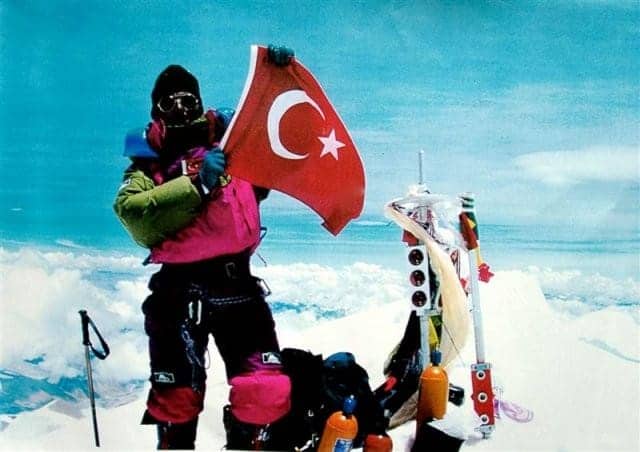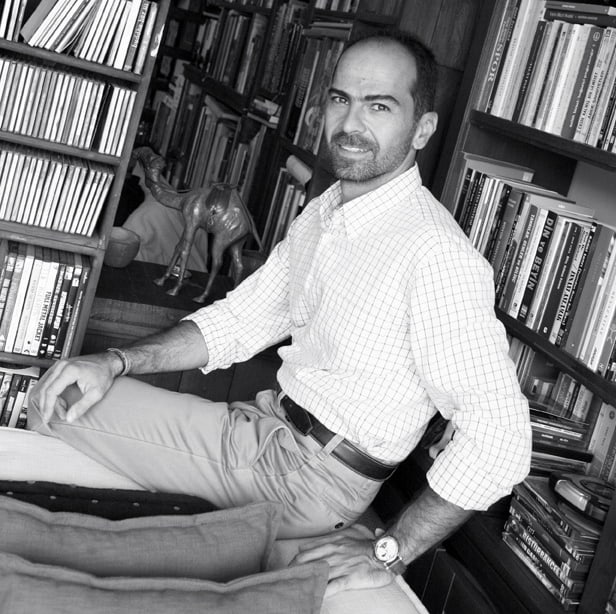By Gökay Ürk

Nasuh Mahruki is a prominent figure in Turkey – an accomplished mountaineer, he has also served as a instructor, organizing personal development, team building, and risk-management seminars, while also finding the time to write seven books. Mahruki is also well-known and respected for his work with AKUT (Search and Rescue Association), which he co-founded. AKUT helped save many lives during the tragic 1999 Marmara earthquake in Turkey. He even received an international Gusi Peace Prize in honor of his humanitarian efforts.
I met with Nasuh to talk about his mountaineering career and his work with AKUT. Considering that he earned the Snow Leopard Title in 1994 (given to those who successfully climb five 7000m peaks in the Pamir and Tien Shan mountains), has ascended Mount Everest twice, in 1995 as the first Turkish citizen to do so and again in 2010, and conquered K2 in 2001, I couldn’t wait to hear what he had to say.
What does Mahruki mean? Where does it come from?
Mahruki refers to something that is burned in the fire. My great-great-grandfather, Nasuhzade Ali Paşa, was crowned as Kaptan-ı Derya (naval commander and chief) by the Ottoman Sultan, Mahmut II. While suppressing a Greek riot, his ship was burned by rebels and he died on board. Subsequently, he was given the nickname Mahruki. When the surname law was passed in 1934, my grandparents wanted to adopt Mahruki and from then on we have been using it.
How did your passion for mountaineering first emerge?
When I was a business student at Bilkent University, I saw the flyers for a new mountaineering club and went to the first meeting to see what it was like. After watching the slideshow, I was so fascinated by mountaineering that I had to be part of it. As time went by, I gained more experience with the theoretical and practical training. I must clearly state that Recep Çatak and Ertan Ercan, the founders of the club, greatly influenced my decision to pursue a career in mountaineering.
Turkish families can be very overprotective, which can in turn be a detriment to their children. What was your parents’ reaction when you decided to seriously pursue mountaineering?
My relationship with my parents has always been based on mutual trust and understanding. As a child, if I wanted to do something I would be upfront with them rather than lie. For example, when I was a senior at Bilkent University, I was making plans for my first serious altitude climb at Khan Tengri (7010 m), which is located on the China, Kyrgyzstan, and Kazakhstan border. Rather than ask for permission, I just told my parents that I was going to Khan Tengri. That was all I needed to do!
You have ascended Mount Everest, the highest peak in the world, not once, but twice. You’ve also climbed K2. What makes them different?
At 8611 m, K2 is not the highest mountain in the world, but it is definitely one of the most life-threatening. According to the statistics one out of every eight climbers lose their lives during the journey. It is almost as dangerous as Russian roulette.
How do you feel during those few minutes when you’re on the summits, above the clouds?
Personally, I don’t think that mountaineering is just about reaching the summit. On the contrary, the ultimate experience is the combination of various stages, each of which is demanding in its own way. But one must learn how to enjoy each stage for what it is. The pre-climbing phase starts with having the dream of climbing, followed by theoretical and practical training, the planning of the route as well as the preparation of necessary food supplies. During the climbing stage, one must adequately acclimatize, reach the summit as quickly as possible and come back to base camp safely. The post-climbing period includes writing articles, publishing books, and organizing presentations.

Mountaineering can be extremely expensive. How did you finance your first Everest climb?
The Everest ascent was a really big project and the first time I had to find a sponsor to follow my dream. In 1995 sponsorship, especially of sporting events, had not yet become popular in Turkey. As a matter of fact, even today it is difficult to sign sponsorship agreements. Luckily, with the help of my business background, Yapı Kredi, a Turkish bank, decided to provide financial backing to my project. I remember I even sent a letter to Tansu Çiller, the president of Turkey in 1995, but she had no interest at all.
What do you think about the development of mountaineering in Turkey?
The newest trend is indoor climbing. It dominates everywhere as people do not have enough time and energy to travel long distances to ascend. Turkey is going through a similar stage, though mountaineering is struggling even more here because it doesn’t have strong roots to stand on.
Presided over by the same person for over 15 years, the Turkish Mountaineering Federation is also partly responsible for not improving the position of mountaineering in Turkey as it does not fully integrate all clubs and members.
In your last book, Kendi Everest’inize Tırmanın (Climb Your Own Everest), what do you mean by saying there is an Everest mountain for everyone to ascend?
The book is based on my own life story – the choices I made, the strategies I employed and the mental road map I developed, all of which led me to find success and happiness. I decided to depict this story in 64 steps.
In the book, restoration of the self is emphasized. I think everybody should be self-aware and realize their capabilities. Likewise, they should try to compete with themselves rather than others and attempt to reach the peak of their own potential. We are all different and have lots of things to teach each other.
What does it feel like to return to Istanbul, a chaotic mega city, after being in the mountains?
Istanbul is indeed a chaotic city to live in, but this doesn’t bother me. First, I am lucky to live in a house with a garden. Second, I spend a lot of my time with my like-minded friends working on projects at AKUT. The rest of my time is occupied with writing books, articles, or making presentations and motivational speeches. There’s never a dull moment, so I can’t complain about it.
Will there be projects in the near future?
My last project was climbing Mount Everest in 2010 for the second time. But because I’m getting older, I’m not sure if I can keep embarking on such risky climbs. However, there will always be other projects in my life. I have already been dedicating most of my time to AKUT. My current ‘project’, though, is the most exciting one to date ! I am going to be a father soon as my wife, Mine, is going to give birth in less than 2 months.










Climb Your Own Everest , when you climb your everest you see…nothing lasts, nothing ends, and nothing is perfect.
perfect is repeatable…
Climb Your Own Everest , when you climb your everest you see…nothing lasts, nothing ends, and nothing is perfect.
perfect is repeatable…
…nothing lasts, nothing ends, and nothing is perfect.
perfect is repeatable…